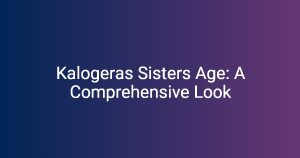The phenomenon of an influencer gone wild has taken the digital world by storm, captivating audiences with its blend of outrageous behavior and social media scrutiny. This term encapsulates influencers who cross certain boundaries—whether through controversial content, extreme lifestyles, or shocking statements. With the exponential rise of social media, influencers have shifted from being simply popular figures to polarizing personalities that can either enthrall or terrify their followers. The significance of this behavior lies in its potential impact on influencer culture and its followers, making it a critical area of discussion in today’s digital landscape.
The Rise of Social Media Influencers
Evolution of Influencers
In the digital age, influencers are individuals who leverage their online presence to create a lasting impact on audiences and brands. They often utilize platforms such as Instagram, TikTok, and YouTube to share their lives, promote products, or advocate for causes. The evolution of social media platforms—starting with early days of Friendster to the rise of Facebook, Instagram, and TikTok—has significantly influenced how influencers establish their careers. Key examples of early influencers include YouTube stars like Jenna Marbles and vloggers such as Casey Neistat. Their unique storytelling captivated millions, establishing them as pioneers in the influencer movement.
The Role of Authenticity
Authenticity plays a crucial role in the success of an influencer. Followers often gravitate towards personalities who they perceive as genuine. Influencers cultivate their personal brands by sharing their experiences, which can range from mundane to extraordinary. However, there exists a fine line between authenticity and the carefully curated personas influencers present. In the quest for fame, some influencers may sacrifice their authenticity, opting instead to showcase more sensational versions of themselves. This shift has sparked debates about the essence of genuine influence in a market driven by visibility and distractions.
What Does “Gone Wild” Mean?
Definition and Context
The phrase “going wild” within the influencer context typically refers to behavior that challenges societal norms or engages in controversial actions that generate significant media buzz. Examples might include high-profile influencers engaging in outlandish pranks, showcasing lavish lifestyles disconnected from reality, or making polarizing political statements. The interpretation of these actions can vary; some view them as exciting expressions of individuality, while others critique them for irresponsibility or insensitivity.
Key Characteristics of Influencers Gone Wild
There are several distinctive traits common among influencers who have gone wild. For instance:
- Extreme actions or behaviors that provoke public reaction.
- Engagement in controversial content that sparks dialogue or outrage.
- Behavior that shatters social and cultural expectations.
- The ability to influence audience perception and behavior, potentially leading to drastic shifts in follower loyalty.
Case Studies
Influencer Examples
Case Study 1: Jake Paul
Jake Paul, a YouTube star, skyrocketed to fame with his outlandish pranks and music career. He was often categorized as an influencer gone wild following numerous incidents, including a notorious house party that turned destructive, leading to police intervention and widespread media coverage. Public reaction was polarized; while some fans supported his antics as part of his brand, others expressed concern over his influence on young audiences. In the aftermath, Paul’s follower count soared, but his brand partnerships faced scrutiny, fundamentally altering his approach to collaborations.
Case Study 2: Tana Mongeau
Tana Mongeau is another influencer known for her bold online presence. Her infamous TanaCon event was meant to rival VidCon but turned into a logistical nightmare. The backlash was severe, leading many to question her reliability as an influencer. Despite the negative experiences, Tana’s ability to keep her audience engaged through controversial antics ensured her continued relevance, although many brands she previously collaborated with reevaluated their partnerships with her.
Social Media Reaction
Reactions across social media platforms to these influencer antics often lead to viral trends and memes. Platforms like Twitter, Instagram, and TikTok serve as echo chambers for public sentiment, with opinions varying widely—some users showcase support through memes and trends, while others voice strong criticism against perceived irresponsibility. The phenomena of influencers gone wild foster engaging discussions regarding ethics, accountability, and the influencer culture’s evolution.
The Impact of Influencer Gone Wild Culture
On Followers and Fans
The actions of influencers gone wild can significantly affect follower attitudes and behavior. Fans may adopt similar outrageous behavior, while others might feel disillusioned by the perceived necessity of dramatization for relevance. This phenomenon has crucial implications for mental health, particularly as young audiences grapple with body image, self-worth, and societal expectations perpetuated by these influencers. Over time, the idolization of influencers poses risks, as it often engenders unrealistic standards and expectations.
On the Influencer Marketing Industry
The influencer marketing industry is not immune to the repercussions of this phenomenon. Brands are increasingly cautious when collaborating with influencers known for extreme behaviors. Marketers are reevaluating risk tolerance in association with these influencers. As a result, there is a discernible shift in strategies—brands are either distancing themselves from controversial influencers or seeking to partner with those demonstrating responsibility and positive engagement.
The Dark Side of Influencer Gone Wild
Ethical Considerations
As the influencer gone wild culture gains traction, ethical considerations come to the forefront. The moral responsibility of influencers to their audiences remains a hot topic. The sensational content often glosses over the potential harm it can inflict on vulnerable or impressionable audiences. Debates surrounding accountability and transparency constantly evolve, putting the spotlight on the responsibilities that come with influence.
Legal Ramifications
Extreme influencer actions can lead to legal pitfalls sometimes, with several influencers facing lawsuits or legal challenges due to their behavior. An example includes influencers who promote controversial products without proper disclosures, leading to legal ramifications from regulatory bodies. Understanding these legal aspects has become crucial as influencers navigate the balance between risk-taking for engagement and adhering to responsible content creation.
What Comes Next? The Future of Influencers
Trends in Influencer Behavior
As we look toward the future, predictions indicate that influencer behavior will continue to evolve, likely leading to the next generation of content. The backlash against sensationalism may prompt influencers to explore avenues that prioritize authenticity and responsible engagement with their audiences. As audiences become more discerning, the appetite for outlandish behavior may decline, giving rise to more curated, meaningful relationships between influencers and their followers.
Cultivating Positive Influence
Moving forward, strategies for influencers will play a pivotal role in maintaining authenticity without resorting to extremes. Engaging with their communities and fostering dialogues will be fundamental in building lasting connections. Social responsibility and awareness of their platform’s impact on public discourse will differentiate successful influencers in an evolving landscape.
Conclusion
Bridges between creativity and responsibility in the influencer world must be built as influencers navigate their paths in an increasingly scrutinizing environment. Acknowledging the impacts of becoming an influencer gone wild is essential not just for influencer culture; it also fosters discussions about accountability, guidance, and the healthy representation of diverse experiences across platforms.
Frequently Asked Questions (FAQ)
1. What does “influencer gone wild” mean?
The term refers to influencers engaging in extreme or controversial behavior that deviates from social norms.
2. Who are some famous examples of influencers gone wild?
Influencers such as Jake Paul and Tana Mongeau have gained notoriety for their provocative actions that stirred public reaction.
3. How does the behavior of influencers impact their audience?
It can lead to changes in follower attitudes, sometimes promoting unhealthy standards or behaviors.
4. Are there any legal consequences for influencers who go wild?
Yes, influencers may face lawsuits related to their behavior, especially if they violate advertising or promotional regulations.
5. How is the influencer marketing industry changing?
The industry is becoming more cautious, with brands reassessing partnerships with influencers known for extreme conduct.
6. What strategies can influencers employ to maintain their authenticity?
Engaging with their audience genuinely and focusing on responsible content creation can help maintain their authenticity.
7. How do social media platforms react to influencers gone wild?
Reactions can lead to virality, support, and backlash, influencing public sentiment and ongoing conversations.
8. What ethical responsibilities do influencers have?
Influencers are expected to be aware of their impact on audiences and practice accountability in their content creation.
9. How does mental health relate to influencer culture?
Unrealistic portrayals and pressures can lead to mental health concerns among followers, often linked to body image issues.
10. What does the future hold for influencer behavior?
There may be a trend toward more mindful, authentic content as audiences become increasingly discerning and critical.
| Influencer | Incident | Public Response | Impact on Followers |
|---|---|---|---|
| Jake Paul | Destructive party | Polarized; some support, others critiqued | Increase in views but raised concerns about responsibility |
| Tana Mongeau | TanaCon disaster | Widespread backlash; raised questions about competence | Engagement remained high despite controversy |




